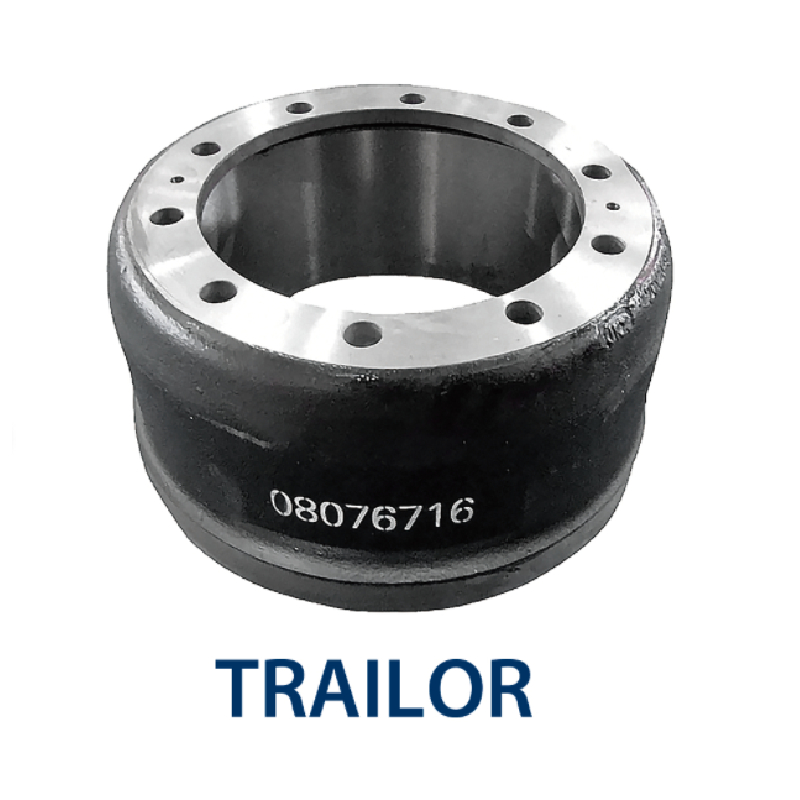Oct . 31, 2024 08:26 Back to list
brake drum interchange
Brake Drum Interchange Understanding Compatibility and Options
When it comes to the essential components of a vehicle's braking system, brake drums play a pivotal role in ensuring safe and effective stopping power. However, the need for maintenance and replacement of these components often leads to questions about brake drum interchangeability. Understanding the factors that govern brake drum interchange can significantly influence the cost-effectiveness and safety of vehicle repairs.
What is Brake Drum Interchange?
Brake drum interchange refers to the compatibility of brake drums between different vehicle makes and models. Many factors determine whether one brake drum can be used in place of another, including dimensions, materials, mounting configurations, and design characteristics. Knowing how to interchange brake drums can help vehicle owners, mechanics, and parts suppliers select the right components quickly and efficiently.
Key Factors in Brake Drum Compatibility
1. Size and Dimensions The most crucial aspect of brake drum interchange is size. Brake drums come in various diameters and widths, which must match the specifications outlined by the vehicle manufacturer. Mismatched sizes can lead to poor braking performance or, worse, brake failure.
2. Design Features Brake drums may have different shapes or designs that alter how they interact with brake shoes and the overall braking system. Features such as the drum's profile, ribbing, and surface texture are significant considerations to ensure effective friction and heat dissipation.
3. Material Composition Brake drums are typically made of cast iron or aluminum. These materials not only affect the durability and weight of the drum but also its ability to dissipate heat. When interchanging brake drums, it is vital to consider whether the material has influences on performance and longevity.
brake drum interchange

4. Mounting Configuration The way a brake drum is mounted can vary significantly between vehicle models. Bolt patterns, the number of bolts, and lug nut sizes play critical roles in ensuring that a new drum can be securely fastened to the wheel hub.
5. OEM vs. Aftermarket Parts Original Equipment Manufacturer (OEM) parts are designed to meet specific vehicle standards, while aftermarket parts offer a range of options that may vary in quality and compatibility. When considering brake drum interchange, it’s crucial to ensure that any aftermarket parts used meet the necessary specifications.
Benefits of Understanding Brake Drum Interchange
Knowing how to interchange brake drums can save car owners both time and money. By choosing compatible alternatives, one can often find more affordable parts without sacrificing safety. Moreover, mechanics can complete repairs more swiftly, leading to reduced labor costs.
Additionally, having an awareness of brake drum interchange may offer insight into potential upgrades. For instance, if a vehicle is known for having subpar brake performance, an owner might find a larger or higher-performance drum from a different model that fits well.
Conclusion
In conclusion, brake drum interchange is a vital concept that revolves around compatibility and performance within a vehicle's braking system. Understanding the factors affecting interchangeability can help vehicle owners make informed decisions, ensuring both the safety and efficiency of their brake systems. Whether navigating routine maintenance or considering upgrades, recognizing the nuances of brake drum interchange can empower users to optimize their vehicle’s braking capabilities.
-
Your Brake Drum Man: Premium & Reliable Brake Drums for Sale
NewsAug.18,2025
-
ROR Web Development: Build Fast, Scalable, Secure Apps
NewsAug.17,2025
-
Scania Brake Drums: OEM Quality for Optimal Safety & Durability
NewsAug.16,2025
-
R.V.I: Advanced Remote Visual Inspection for Precision
NewsAug.15,2025
-
Discover HYUNDA: Innovative Vehicles, Equipment & Solutions
NewsAug.14,2025
-
R.V.I: Unlock Advanced Insights & Real-time Performance
NewsAug.13,2025
